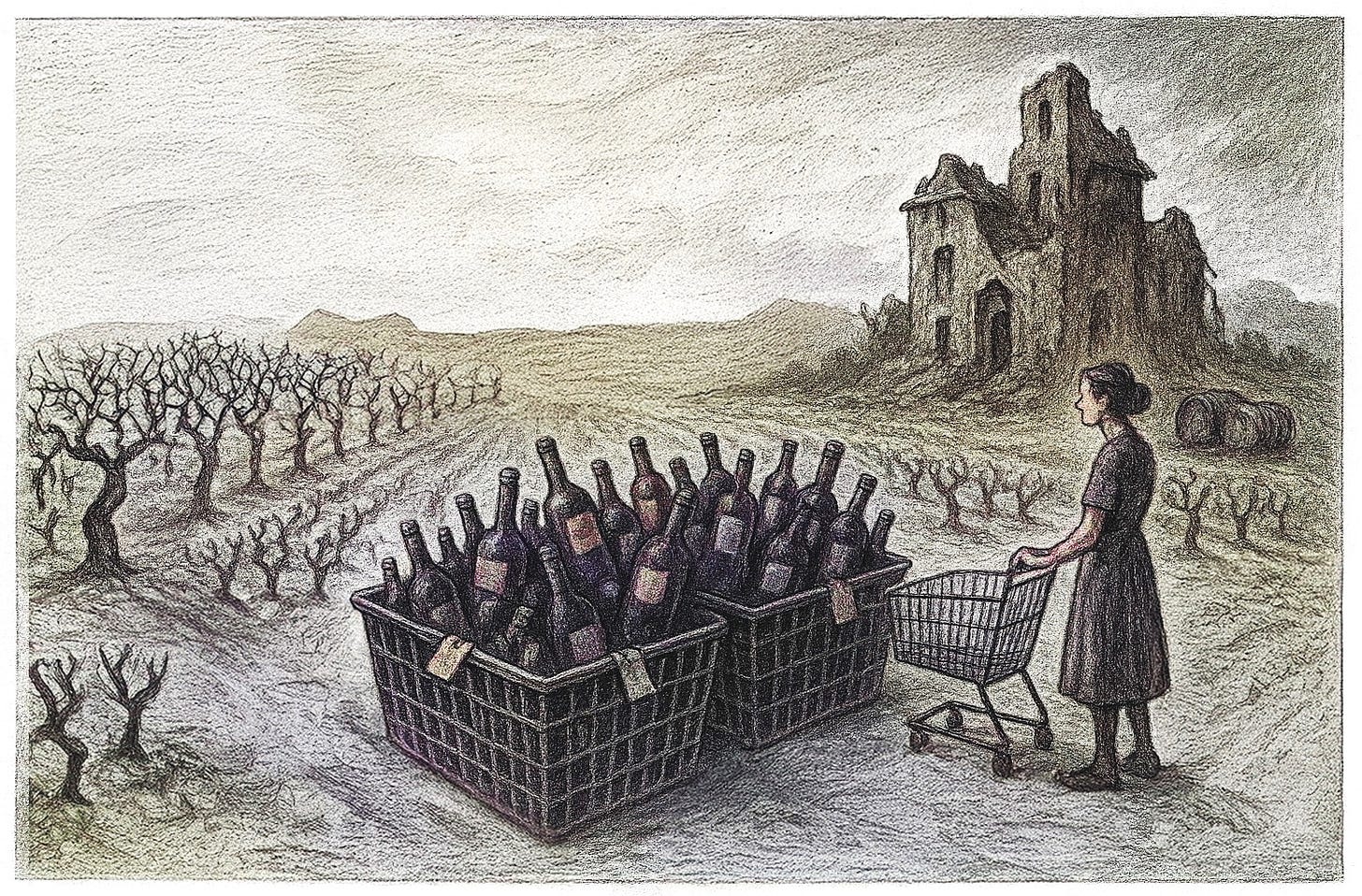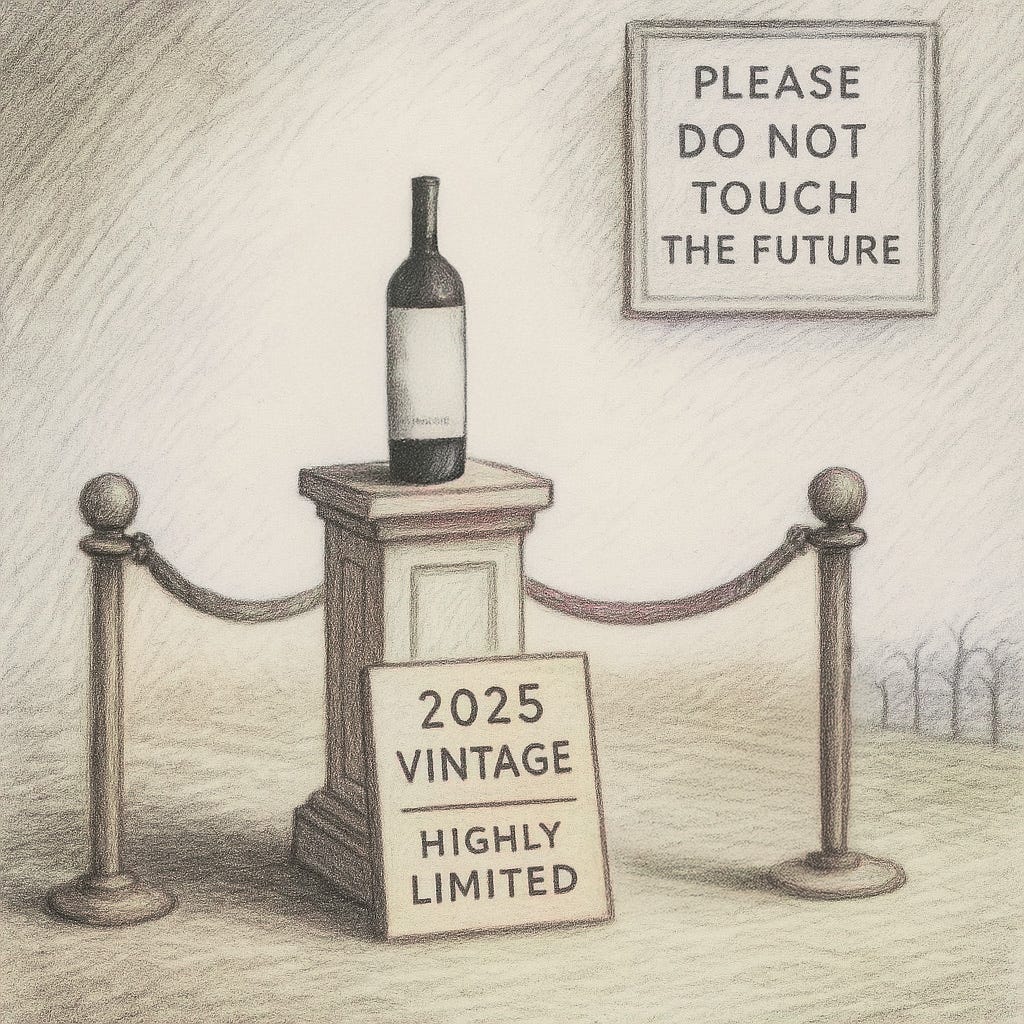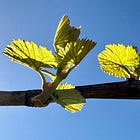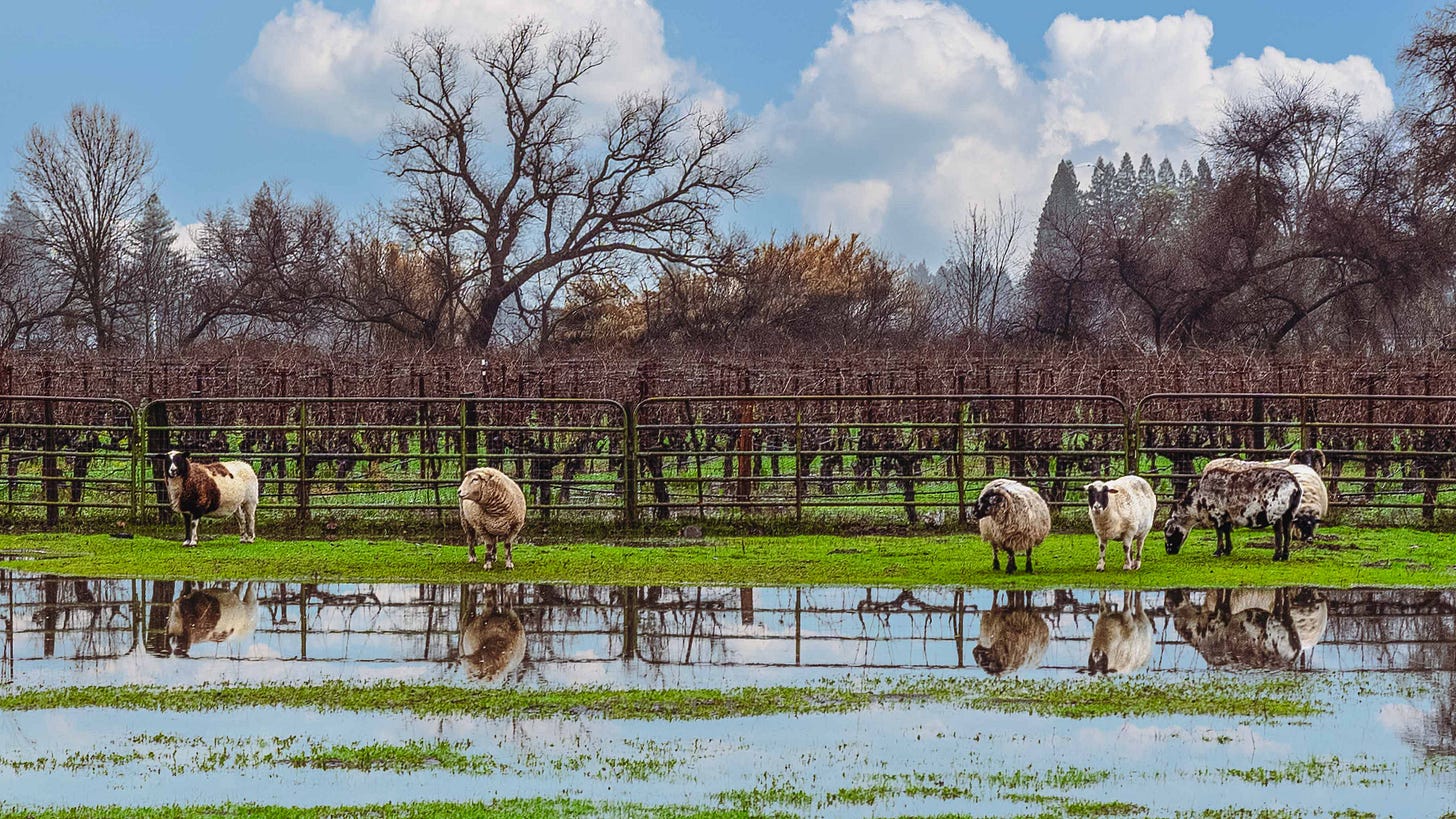NAPA VALLEY, Calif. — Wineries around the world are struggling to sell even wines that recently have been on allocation because of high demand. There are at least five major reasons for slow sales, but not everyone will end up a loser. And even optimists agree that while a resurgence of interest in quality wine might take an extra year, yet they are still hopeful that the turnaround could be faster.
To be sure, deterioration in the sales of goods such as fresh produce or bakery items clearly can prove to be disastrous for sellers because of the perishability of their products. And high-tech electronics also have a limited shelf life – until two-point-oh is released. Too much inventory and not enough buyers can lead to rapid financial disaster.
The recent downturn in wine sales, which we recently reported on here, has cast a pall over the industry, leaving many small wineries adrift in a roiling sea replete with sharks and scavengers. It has led to talk of bankruptcies, mergers and deep discounting that may result in long-term financial woes. But there is a positive side to all of this, notably for savvy wine-lovers.
Industry professionals estimate that California winery closures this year will amount to between 8% and 12% of existing wineries. And growers estimate that about 30% of all of the wine grapes grown in California in 2024 were never harvested because of zero demand.
The number of companies that are selling successful wine brands and closing facilities continues to grow. And some good wines are being “dumped” to discounters at near or below cost.
“One thing is certain: The way we all once bought wine in retail shops and restaurants will undergo major changes that will benefit the most knowledgeable purchasers.” — Dan Berger
Remember that most wine is perishable. Maybe not as perishable as a bagel, but there is a limit to how long a wine is viable in the marketplace. Just one look at a discount store will tell you that almost everyone is suffering. Last week one national grocery chain had five different rosés from the 2022 vintage, about two years older than optimum. I bought three of them. All were awful.
Yet there is optimism in some areas of the wine world. Among the winners will be shrewd consumers who can take advantage of lower prices. Moreover, consumers will see some better wines, too. That’s because some red wines are always released too soon.
Retail stores that have good storage conditions will be positioned to offer those wines that are better than they were on release.
Challenge your vocabulary with this week’s mystery word. Submit your answer in the poll and check the bottom of the page for the correct answer.
Although some wholesale companies face financial challenges, the largest are thriving. The giant wholesale company Southern Glazer’s (Forbes estimates it to be the nation’s 10th largest privately held company) continues to grow. Last year it acquired Horizon Beverage Group, a prestigious distribution company in New England. And rumors say Southern also may open a new distribution center in Louisiana.
Meanwhile, Republic National Distributing Co, the second largest alcoholic beverage distributor, announced a week ago that it was abandoning business in California, leaving an estimated two dozen or more California wineries without national distribution.
No one is entirely sure how the brand divestments that occurred within the last year will impact the overall retail market, but I suspect that within the next year savvy consumers will be in the driver’s seat on two fronts: lower prices and higher quality. One thing is certain: The way we all once bought wine in retail shops and restaurants will undergo major changes that will benefit the most knowledgeable purchasers.
Price Is Under Attack
As domestic wine inventories back up in retail stores and in wholesale and winery warehouses, those involved in the trade will deal with the financial realities in ways that may positively impact how consumers purchase their wines.
Wine prices will not increase. Most will decline. I envision deep discounting for even popular brands, which may mean less revenue for wineries.
The faster you sell a perishable product, the more rapidly you can save on warehouse storage. Retailers and restaurants may be forced to deal with storage issues by reducing inventories by cutting prices. (Creative marketing ideas, such as midweek specials at restaurants, might be one result.)
Ultimately, the vast amount of wine that is now available is getting “long in the tooth.” Much of it may have to be deeply discounted. This might at first affect less-than-recognizable brands as well as wines made from unusual grapes. Again, adventurous buyers will benefit. But discounts on more prestigious items are inevitable.
For a small number of recognizable brands, the solution may be significant discounting to larger players, such as Kroger, Safeway, Costco, Grocery Outlet, Trader Joe’s and similar chains. Normally, however, such special deals represent opportunities that will evaporate quickly, so it will pay dividends for consumers to snap up the bargains when they are still available. Some may not last long.
Also, major grocery chains that once offered their deepest discounts fox six-bottle purchases may find it necessary to offer the same discount for four-bottle buys.
Grocery Outlet, with 480 stores nationally, is one of the nation’s largest discount wine retailers. It specializes in private-label wines and recognizable brand overflow items. It recently featured limited items from brands such as DeLoach, Buena Vista, Beringer, Chateau St. Jean and Wente. Some of these wines may be available only at Grocery Outlet stores and nowhere else. The chain also recently launched an in-house brand called Second Cheapest Wine at $4.99 per bottle.
Most of the deeply discounted wines that have recognizable names could be wines that were produced in quantities larger than the winery could sell under current conditions. Or they might be wines that were made specifically to take advantage of inexpensive grapes.
(I even heard of some grape-growers in 2024 who actually offered grapes without charge if the winery would simply pay for the shipping. In two cases the growers said there were no takers.)
Import statistics show that about 37% of the wine sold in the United States in 2023 was imported. A large percentage of that shows up today at closeout retailers with labels that indicate that the wine was imported in bulk – in large sea-going containers holding thousands of gallons of bulk wine – and then bottled here. That’s cheaper than shipping heavy bottles.
The impact of tariffs, or even the threat of them, may well change how the wine business reacts. One small importer of Italian wine based in Northern California told me last week that he had just paid a 10% tariff on his most recent shipment and was having a hard time deciding whether to absorb the cost or pass it along to consumers.
Major chain wine retailers or even specialty grocery operations often carry marginal brands at deeply discounted prices. Some of the items may be good values, but since most such brands are rarely reviewed by reputable wine experts, consumers are on their own. The only way to find out whether a deeply discounted wine is any good is to try it.
Another excellent value might be wines with legitimate brand names that never sold and ended up in discount shops. But beware: A Napa or Sonoma winery’s bottle with a “California” appellation may be mediocre at best.
One final reason why wine sales have declined throughout the United States has been the weakness in wine purchases by Generation Z buyers, which was highlighted recently in an analysis by Rabobank.
One factor contributing to the decline in wine sales in the United States is a shift in purchasing patterns among younger consumers, particularly Generation Z. This trend was highlighted in a recent analysis by Rabobank.
During Brown-Forman’s March 5 earnings call, CEO Lawson Whiting remarked:
“They just don’t have the money in their pockets to be able to do things,” Whiting said of Gen Z. “So I would think some of the popular press is sort of over-reading into Gen Z ... And in fact, some of our internal studies [show] that [in the] 35-and-up age group, we’re actually seeing per capita [spending] going up in the United States.”
While Whiting attributed the shift largely to limited disposable income, other analysts have noted that Gen Z’s evolving tastes may also reflect broader changes in cultural and health priorities. Many in this age group appear more interested in moderation, alternatives to alcohol, and products with clear environmental or social value propositions — factors that may be just as influential as economics.
Quality Will be Better
With fine wine, vintages matter. And the current situation in which wine sales are slow could actually benefit consumers: Some wines (such as cabernet sauvignon) will be better because they didn’t sell as quickly as they did two years ago. And they benefited from additional time in the bottle. But other wines (like zinfandel and several white wines) may deteriorate.
General rules do not apply here; it is best to discuss this on a case-by-case basis. Usually, rich young reds (like most 2023s) will benefit from a little added time in bottle. American wineries routinely ship wine when it is too young, often without enough time to settle down after bottling. Many of the wines could use extra bottle time or decanting or both.
A good example would be red wines made from Bordeaux grapes. Just an extra year in the bottle often pays big dividends. The best are wines that have good acidity and low pH levels (3.6 range; avoid reds with a pH of 3.85 or higher). The best reds today would be from 2021 or 2022. (Caution: Some 2020 reds could display smoke taint from Northern California fires.)
California producers of cabernet will have little to fear from the 2021 red Bordeaux wines, which suffered some nasty cold spring temperatures and a very uneven growing season. But a few of those I tried should please those who appreciate French-style cabernets because of their more classic European nature after three consecutive vintages in which the wines were a bit more voluptuous than is typical.
Another grape that might benefit from additional time in bottle is sauvignon blanc. Almost no one ever ages SB intentionally. Most Americans think of it as an instant quaff. But an extra six months or even a year in good storage conditions can benefit balanced, dry SBs.
It also might be a great time to seek out petite sirah, a noble variety that often is released so soon that its aggressive tannins can be intrusive. Two additional years in the bottle and time in a decanter will benefit most PS.
One wine that I suspect may not benefit from additional time in the bottle is zinfandel. Those with 15% alcohol or more usually do not benefit from added time. Exempt from this edict about zin are those with lower alcohols – the few made with 13.5% to 14.2% and have good acids.
Another wine that might not benefit from additional time in the bottle is chardonnay. Most are produced with either barrel-aging or have contact with oak. Either procedure can add oxygen. Most inexpensive chardonnays typically don’t improve after bottling.
Most imports have lower alcohols than do California wines. As a result, many European reds display more regional character, which is better understood by East Coast wine buyers.
The historic reason for this is that California’s denser wines were rarely shipped to the East Coast until after the national highway system was completed in the late 1950s. As a result, historically, East Coast buyers have leaned toward tarter wines, while many West Coast consumers favor fruit-forward styles wines from our Mediterranean climate.
—
Dan Berger has been writing about wine since 1975.
Wine Discovery:
Wine Discovery: 2020 Westside Crossing Cabernet Sauvignon, Napa Valley ($45/see below) – This is one of the best value cabernets I have tasted in the last decade. Because of a vineyard contract change, the owner of Moshin Vineyards, former San Jose State mathematics professor Rick Moshin, was able to purchase enough fruit to make 600 cases of this terrific wine. It is a beautiful example of Old World aroma with cherry/herb complexity and only a trace of oak. Despite 14.8% alcohol, the good acidity and beautifully managed tannins make this a superb example of what Napa Valley could easily do if the best winemakers wanted to. It probably will age nicely for at least three to five more years, but I can’t believe buyers will be able to keep their hands off this stuff. From the winery website: “Classic Napa Cabernet! Soft and juicy with a wonderful grip on the back end. Cherry, cigar box, and old leather play off the nose and palate. Like returning home after a long vacation, this wine will bring a smile and a sense of comfort in troubled times.” Bottle Barn in Santa Rosa is carrying this wine for $17.95. Just five cases remain in stock. Not to be missed, even at the winery price.
Today’s Polls:
This Week's Word Challenge Reveal:
The correct answer is D: "Futures price above spot price."
"Contango" describes a market condition where the agreed price for a future delivery of a product — like oil, grain or bulk wine — is higher than the price you'd pay for that same product today. This can happen when buyers expect future storage costs, insurance or demand to justify a higher price later. In the wine industry, contango dynamics can appear when producers lock in prices for wine barrels, glass or bulk shipments months in advance, betting that future costs will rise.
The term first appeared in 1853 in the London financial world, likely as a playful alteration of the word “continuation.” It referred to a fee paid by a buyer to postpone settlement of a stock trade. Brokers used it to extend deals—hence, “continue” became “contango.” Though its exact origins are uncertain, the word’s long-standing place in the economic vocabulary reflects how even wine, in times of glut or delay, dances to the rhythms of broader commodity logic.
Explore These Related Articles:
Browse All Napa Valley Features Stories
The views, opinions and data presented in this article are those of the author and do not necessarily reflect the official policy, position or perspective of Napa Valley Features or its editorial team. Any content provided by our authors is their own and is not intended to malign any group, organization, company or individual.




















